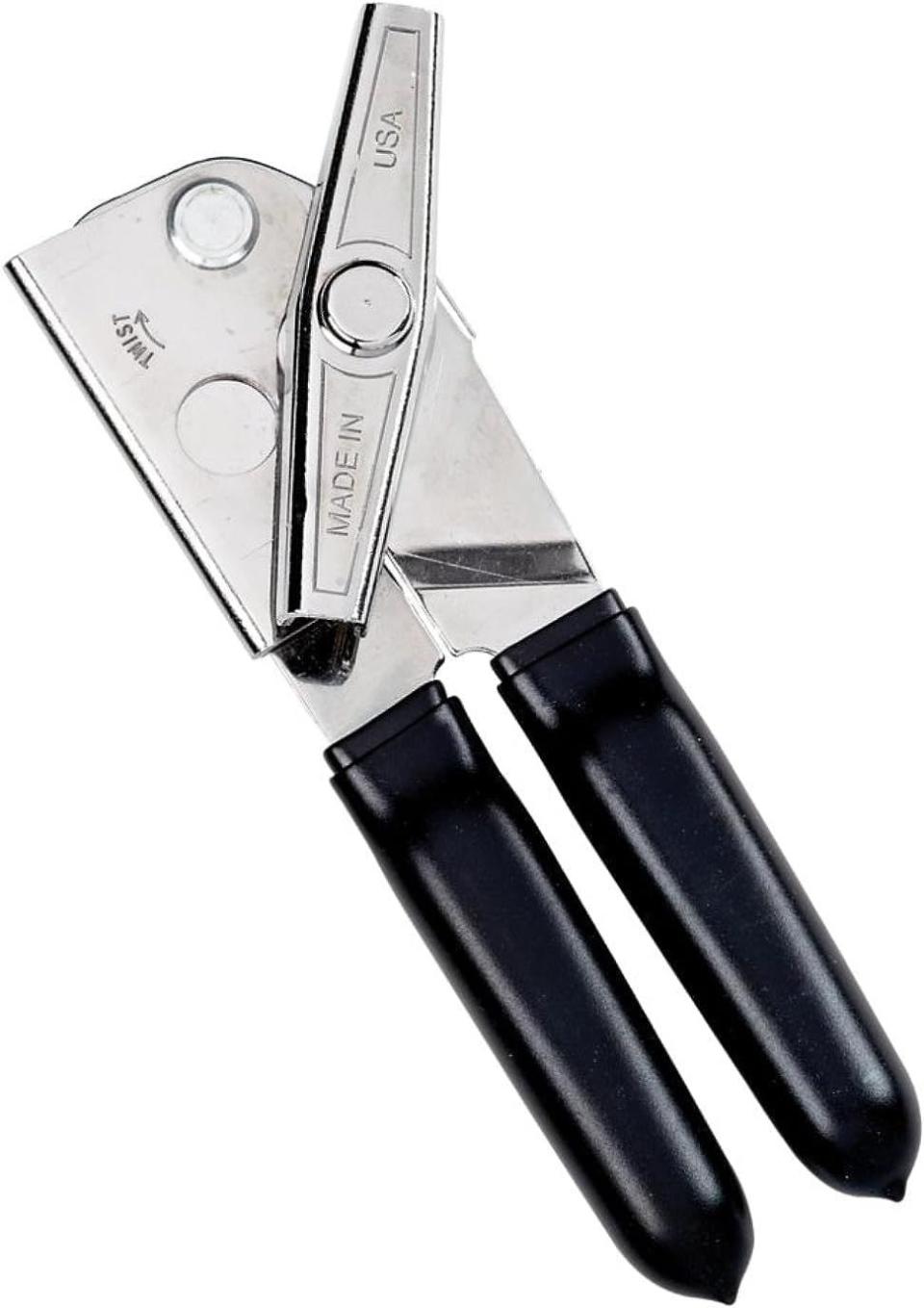The 3 Easiest (and Safest) Ways to Open a Can Without a Can Opener

"Hearst Magazines and Yahoo may earn commission or revenue on some items through these links."
[table-of-contents] stripped
Has this ever happened? You're at some crazy Airbnb getting ready to open up a can of food, (maybe you're making one of these canned tuna recipes) when you discover that the kitchen doesn't have a can opener—and no one remembered their Swiss Army knife.
What to do? You could give up and see what the local takeout options are. But come on. You're no quitter. If you really need to get into that can—and going to the store to buy a can opener isn't an option—what do you do?
Thankfully there are plenty of ways to open a can with common household items. The important thing to remember is that the lid of a can is actually a very thin piece of metal, and that metal is generally soft, and made to be opened. Most utensils (knives, spoons, even forks) are stronger and thicker. You only need an object that is a little bit stronger to pierce the surface.
If you have a little time, we'd say the easiest (and safest) way to open a can without a can opener is by wearing down the edges of the lid until it breaks. You can do this by rubbing it with a metal spoon using the instructions below. If that doesn't work, or you want to open a can a little quicker, then our second-best recommendation is to use the heel (not the point!) of a chef's knife blade.
But let's say you really have no tools: Perhaps you're cooking up some campfire recipes, and you forgot all but the most basic and flimsy cooking gear. In that situation, the flat surface of a rock can work. Read on for explanations of all three methods!
A Note of Warning
The edges of any can are sharp under the best circumstances. When using unusual methods such as these, be extra wary of metal splinters, watch for cuts, and be cautious! (Also, if you find yourself looking at this page a lot, maybe just get a can opener. The one recommend is right here.)

EZ-DUZ-IT Deluxe Can Opener with Black Grips
amazon.com
$14.60
Best Method: Use a Spoon
If you have a little time (and a spoon) try this method. First, get the right grip: Grip the bowl (i.e. not the handle) of a sturdy spoon in the palm of your hand so that your four fingers are firmly grasping it. The tip of your index finger should rest near where the bowl meets the handle. Your pinky should sit inside the curve of the bowl, which stabilizes your grip and enables you to more easily control the tool. The tip of the spoon should stick out just a little below your pinky.
With firm pressure, vigorously rub the tip of the spoon back and forth along the crimped edge of the can, where the can opener would typically puncture. Keep rubbing until the metal thins. Eventually, after a few minutes, it will create a hole. Press the spoon into the hole, and pry the edge of the spoon upward around the edge of the can, slowly breaking the top off. Continue to work into the hole along the can’s perimeter until you’ve created a large enough cut to pry the lid open.
If you don't have a spoon, this method will work with a screw driver, or any other similarly edged metal item. If you have a strong-enough fork, you can also try to puncture the lid with one of the tines. Though be warned: it also may ruin the fork.
Alternate Method: Chef's Knife
If you need to get into the can a little more quickly, and/or are relatively secure in your knife skills, you can try opening the can with the heel of a chef's knife (the part of the blade nearest to the handle) using it like an old-fashioned can-opener. This is safer than using the point, which can slip (or even break), causing injury and ruining your knife. You'll need to find a knife without a bolster that covers the heel, however (the bolster is the thick part that sits in front of the handle of some knives).
To get started, firmly grip the handle and position the back corner of the blade (the heel) upright along the inside edge of the can's rim. Being careful to keep your fingers clear of the blade, push the corner of the heel downward and perforate the lid by digging in at an angle, more or less like an old-fashioned lever-type can opener. Repeat this process around the rim of the can until you have weakened the lid enough to pry the can open.
Alternatively, if you have a pocket knife or a small paring knife, you can put the can on a flat, sturdy surface and try to puncture the can with the tip of the knife. Be careful! If the can or the knife are not properly controlled, the knife can easily slip. Keep puncturing holes evenly around the edge of the can, and the lid will eventually come off.
Alternate Method: Rough Surface
Save this method for the moment you find yourself with no tools. All you need is a large, relatively flat rock or stretch of concrete, and a soft cloth for cleaning the top of the lid. The process is pretty straightforward: Find a rough surface, and place the top of the can flat against it. Now, sand the top ridge of the can against the surface until it breaks the seal. Wipe the metal shavings off, open the lid, and cook or eat the food inside. That's it!
This process takes a while, but it will certainly work in a pinch—and our guess is that if you are trying to open a can and you have neither a knife nor a spoon nearby, you're probably in a real pinch. A couple helpful hints: Periodically rotate the can to evenly wear down the edge and squeeze every now and again to help separate the seal. As soon as you start seeing moisture on the rock, it's a sign that the seal has broken.
For demonstrations of these methods (and even more to try), check out this video by Youtuber Mr. Hacker.
You Might Also Like
